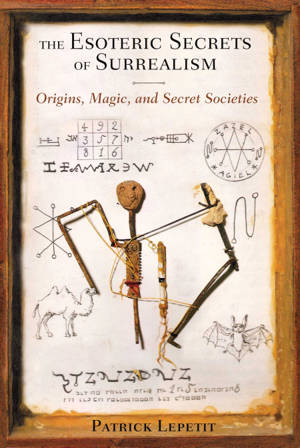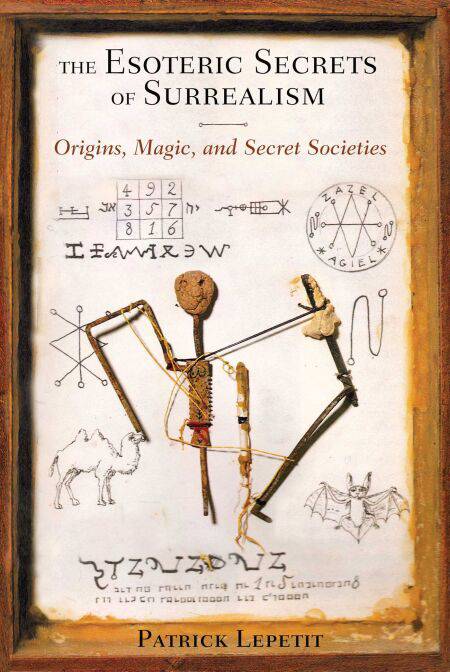
- Retrait gratuit dans votre magasin Club
- 7.000.000 titres dans notre catalogue
- Payer en toute sécurité
- Toujours un magasin près de chez vous
- Retrait gratuit dans votre magasin Club
- 7.000.0000 titres dans notre catalogue
- Payer en toute sécurité
- Toujours un magasin près de chez vous
26,83 €
+ 26 points
Format
Description
A profound understanding of the surrealists’ connections with alchemists and secret societies and the hermetic aspirations revealed in their works
• Explains how surrealist paintings and poems employed mythology, gnostic principles, tarot, voodoo, alchemy, and other hermetic sciences to seek out unexplored regions of the mind and recover lost “psychic” and magical powers
• Provides many examples of esoteric influence in surrealism, such as how Picasso’s Demoiselles d’Avignon was originally titled The Bath of the Philosophers
Not merely an artistic or literary movement as many believe, the surrealists rejected the labels of artist and author bestowed upon them by outsiders, accepting instead the titles of magician, alchemist, or--in the case of Leonora Carrington and Remedios Varo--witch. Their paintings, poems, and other works were created to seek out unexplored regions of the mind and recover lost “psychic” and magical powers. They used creative expression as the vehicle to attain what André Breton called the “supreme point,” the point at which all opposites cease to be perceived as contradictions. This supreme point is found at the heart of all esoteric doctrines, including the Great Work of alchemy, and enables communication with higher states of being.
Drawing on an extensive range of writings by the surrealists and those in their circle of influence, Patrick Lepetit shows how the surrealists employed mythology, gnostic principles, tarot, voodoo, and alchemy not simply as reference points but as significant elements of their ongoing investigations into the fundamental nature of consciousness. He provides many specific examples of esoteric influence among the surrealists, such as how Picasso’s famous Demoiselles d’Avignon was originally titled The Bath of the Philosophers, how painter Victor Brauner drew from his father’s spiritualist vocation as well as the Kabbalah and tarot, and how doctor and surrealist author Pierre Mabille was a Freemason focused on finding initiatory paths where “it is possible to feel a new system connecting man with the universe.”
Lepetit casts new light on the connection between key figures of the movement and the circle of adepts gathered around Fulcanelli. He also explores the relationship between surrealists and Freemasonry, Martinists, and the Elect Cohen as well as the Grail mythos and the Arthurian brotherhood.
• Explains how surrealist paintings and poems employed mythology, gnostic principles, tarot, voodoo, alchemy, and other hermetic sciences to seek out unexplored regions of the mind and recover lost “psychic” and magical powers
• Provides many examples of esoteric influence in surrealism, such as how Picasso’s Demoiselles d’Avignon was originally titled The Bath of the Philosophers
Not merely an artistic or literary movement as many believe, the surrealists rejected the labels of artist and author bestowed upon them by outsiders, accepting instead the titles of magician, alchemist, or--in the case of Leonora Carrington and Remedios Varo--witch. Their paintings, poems, and other works were created to seek out unexplored regions of the mind and recover lost “psychic” and magical powers. They used creative expression as the vehicle to attain what André Breton called the “supreme point,” the point at which all opposites cease to be perceived as contradictions. This supreme point is found at the heart of all esoteric doctrines, including the Great Work of alchemy, and enables communication with higher states of being.
Drawing on an extensive range of writings by the surrealists and those in their circle of influence, Patrick Lepetit shows how the surrealists employed mythology, gnostic principles, tarot, voodoo, and alchemy not simply as reference points but as significant elements of their ongoing investigations into the fundamental nature of consciousness. He provides many specific examples of esoteric influence among the surrealists, such as how Picasso’s famous Demoiselles d’Avignon was originally titled The Bath of the Philosophers, how painter Victor Brauner drew from his father’s spiritualist vocation as well as the Kabbalah and tarot, and how doctor and surrealist author Pierre Mabille was a Freemason focused on finding initiatory paths where “it is possible to feel a new system connecting man with the universe.”
Lepetit casts new light on the connection between key figures of the movement and the circle of adepts gathered around Fulcanelli. He also explores the relationship between surrealists and Freemasonry, Martinists, and the Elect Cohen as well as the Grail mythos and the Arthurian brotherhood.
Spécifications
Parties prenantes
- Auteur(s) :
- Editeur:
Contenu
- Nombre de pages :
- 544
- Langue:
- Anglais
- Collection :
Caractéristiques
- EAN:
- 9781620551769
- Date de parution :
- 23-04-14
- Format:
- Ebook
- Protection digitale:
- Adobe DRM
- Format numérique:
- ePub

Les avis
Nous publions uniquement les avis qui respectent les conditions requises. Consultez nos conditions pour les avis.






